Ertach Kernow - Cornwall's Western Quoits
Cornwall's Western Quoits
Last year about this time an Ertach Kernow article Cornish hillforts and cliff castles encouraged folk to get out and about and visit some of these ancient sites. This time an overview of some of our Neolithic cromlechs, often called quoits here in Cornwall. For thousands of years these megalithic structures may have stood covered or partially covered in earth as originally constructed. If they had an earth covering this may have gradually eroded away. Many believe that they stood fully exposed as now, but there are various theories as to their original use and how they stood during the Neolithic Stone Age. Certainly, a number have been damaged or completely destroyed through the action of men, usually farmers, for the stone or soil that made up the original construction. Only in the past century have these been seen as valuable objects worthy of protection which now form part of Cornwall’s ancient heritage, Fortunately a number of early Cornish antiquarians and travellers had recorded the existence of quoits, often drawing them, which provided proof of existence and their original look before later total destruction or damage occurred.
Bosporthennis Quoit. Although there is some uncertainty whether this is a cromlech, large burial cist or even a ruined entrance grave it is included here and named a quoit. This monument was first recorded in 1848 by Richard Edmonds later illustrated by J T Blight in 1862, who noted the capstone had been trimmed to form a millstone. W C Borlase and Rev W S Symons excavated during the 1860’s discovering burnt remains and the sherds of an urn. Whether there were more burials within this area, which has been enclosed for farmland and dug out for soil and stone to build hedges, is now unknown. Writings from the 19th century by folklorist Robert Hunt mentions Bosporthennis Great Quoit, which sadly no longer exists as it was broken up long ago. Recent archaeological excavations around the site turned up 37 pieces of worked flint
Also known as The Giant’s Quoit, Carwynnen Quoit has an interesting history and that’s just in the past 300 years. It was first recorded by Edward Lhuyd around 1700, who had travelled to Cornwall as part of his enquiries relating to the Cornish language. This quoit was also noted on the large-scale map of Cornwall created by Thomas Martyn in 1748 and of course unsurprisingly the famed Cornish antiquarian Dr William Borlase produced a drawing and elevation of it in 1750. It was mentioned in the Antiquarian and Topographical Cabinet in 1808 as Pendarvis Quoit along with an engraving, which included the now vanished Pendarvis House in the background, and by C S Gilbert in his History of Cornwall published in 1817. However shortly after this the cromlech collapsed, but in 1834 Lady Tryphena Pendarvis had the quoit re-erected. It then lasted until 1966 when it again collapsed but fortunately once more rescued when the Sustainable Trust, which bought the site in 2009, re-erected it again. It can now be seen in its full standing glory.
One of the best preserved of Cornwall’s quoits is Chun Quoit, mentioned by C S Gilbert in his History of Cornwall. He says ‘In the parish of Morvah is a cromlech, consisting of four upright stones, with a fifth covering the whole, though only resting on three. The incumbent stone, or quoit, measures about twelve feet long by eleven wide, and the four uprights form a complete chest, or kistvaen. This monument is called Chun Quoit.’ In 1871 William Copeland Borlase in his book Naenia Cornubiae described Chun Quoit, or as he named it Chywoone Cromlech, as ‘the most perfect and compact cromlech in Cornwall.’ He believed that this would have originally been fully covered in soil due to the construction and placement of stones.
What is perhaps the most photographed and best-known is Lanyon Quoit is in reality a poor examples of a rebuilt Cornish cromlech. Fortunately, it was recorded and drawn in its original state by Dr Borlase for his 1754 Antiquities of Cornwall publication. In 1815 it collapsed during a storm damaging one of the upright stones. Through public subscription Royal Navy officer Captain Giddy using equipment previously used to replace the logan stone at Treryn Dinas near Treen re-erected Lanyon Quoit. However, not only did it only have the three uprights, but also it was incorrectly realigned and much lower than it originally stood. Borlase had recorded that it was 'so high that a man can sit on horseback under it', perhaps a slight exaggeration, but allowing for a dip in the ground and a small horse perhaps not too far from the truth. How this and other recorded cromlechs have fallen over the past say three hundred years after standing from the Neolithic Stone Age some 5,000 years or so ago is amazing. Perhaps the burrowing of human hand seeking treasures, giants bones or whatever else they believed may have been there reduced their stability and making them liable to collapse. The Lanyon Quoit site became the property of the National Trust in 1952 after being donated by Edward Bolitho of Trengwainton. Access is relatively easy and there are a number of other sites of interest in the close vicinity.
Mulfra Quoit stands with its heavy capstone lying at a jaunty angle, one of the uprights having been removed. Speculation that this may have happened in 1752 when struck by lightning was mentioned by W C Borlase in 1871, but he confirms that through the 1749 records of his three times great grandfather Dr William Borlase its appearance hadn’t changed whatsoever. However, a surrounding stone barrow two feet high and thirty-seven feet in diameter had been removed since Dr Borlase’s time. Although one of the smaller extant cromlechs and with its leaning capstone Mulfra Quoit is still an impressive monument.
The remains of Sperris Quoit are in a sorry state, the cap-stone having been removed entirely and just one upright and three fallen stones to remind anyone that a cromlech once stood there. However, Sperris is part of Cornwall’s quoit story and clearance work by the Penwith Landscape Partnership has allowed the site to be seen and appreciated. They have a trail laid out on their website taking in Zennor and Sperris Quoits along with a lot of other interesting information and images.
Zennor Quoit benefitted from the help of the Rev W Borlase a great grandson of the famed 18th century antiquarian who helped protect it from potential damage by an 19th century farmer. He had been alerted by a local villager who it seems was disapproving of the rebuilding work being carried out. Some stones had already been removed and these can be seen today where the farmer had placed them. The Cornish Telegraph newspaper reported in September 1861 that ‘A farmer had removed a part of one of the upright pillars, and drilled a hole into the slanting quoit, in order to erect a cattle-shed, when news of the vandalism reached the ears of the Rev. W. Borlase, Vicar of Zennor, and for 5s. the work of destruction was stayed, the Vicar having thus strengthened the legend that the quoit cannot be removed.’ I think we should be most thankful to the Reverend Borlase for his five shillings, or twenty-five pence and that the equivalent of about £38 today was well spent.
Although the Rev Borlase managed to stay the total destruction of Zennor Quoit much damage had already occurred during the previous hundred years, by that farmer, his predecessors or natural causes. His illustrious ancestor had visited the cromlech in 1769 and drawn it, showing cap-stone in place. We should be thankful to Dr Borlase that we have his drawings and plans of Zennor and Lanyon Quoits showing their pre damaged state.
Most people reading this will live in Cornwall and are lucky to benefit from a wonderful environment with countless historic treasures. Fortunately, today many are protected albeit still subject to vandalism and misguided human errors of judgement. Our Cornish quoits along with our hill forts and coastal cliff castles are terrific sites to visit and destinations involving short walks good for personal health and wellbeing.
The renowned archaeological artist and author John Thomas Blight wrote in his 1861 book A week at the Lands’ End ‘There are hoary monuments of ages past – many of them well preserved from the destroying hands of Time, yet surrounded by a deep halo of mystery, which the speculations of the antiquary can scarcely penetrate . . . Where, again, in our native land, shall we find a tract of equal extent offering so many attractions in the marvellous variety and grandeur of its scenery, the deep interest of its historical associations and the vast abundance of its ancient monuments?’ All I can add to that is to hope that people get out and appreciate some of Cornwall’s historic delights.
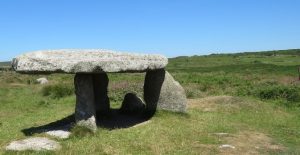
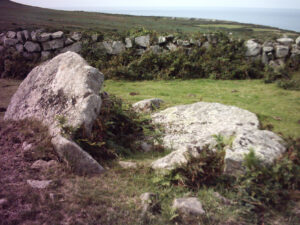
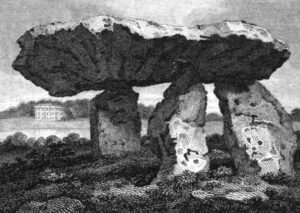
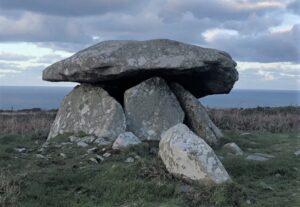
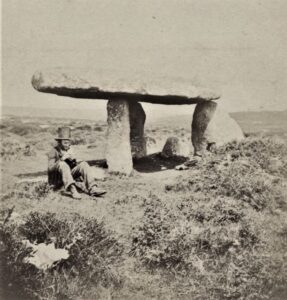
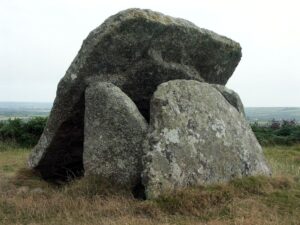
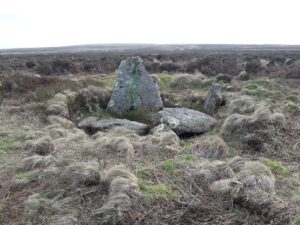
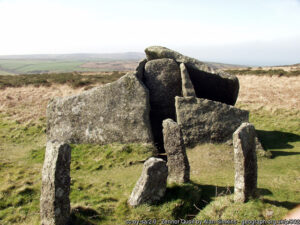
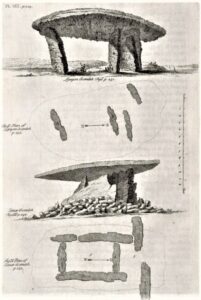
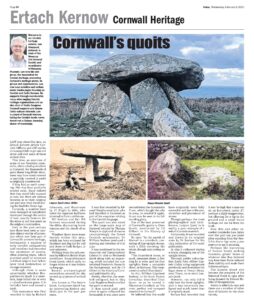
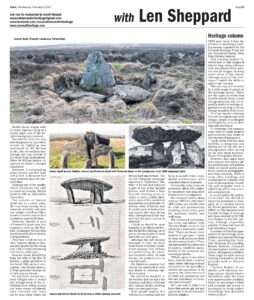
![[137] Ertach Kernow Heritage Column - 8th February 2023 - Technology in Heritage Ertach Kernow Heritage Column - 8th February 2023 - Technology in Heritage](https://www.cornwallheritage.com/wp-content/uploads/2023/02/137-Ertach-Kernow-Heritage-Column-8th-February-2023-Technology-in-Heritage-295x300.jpg)